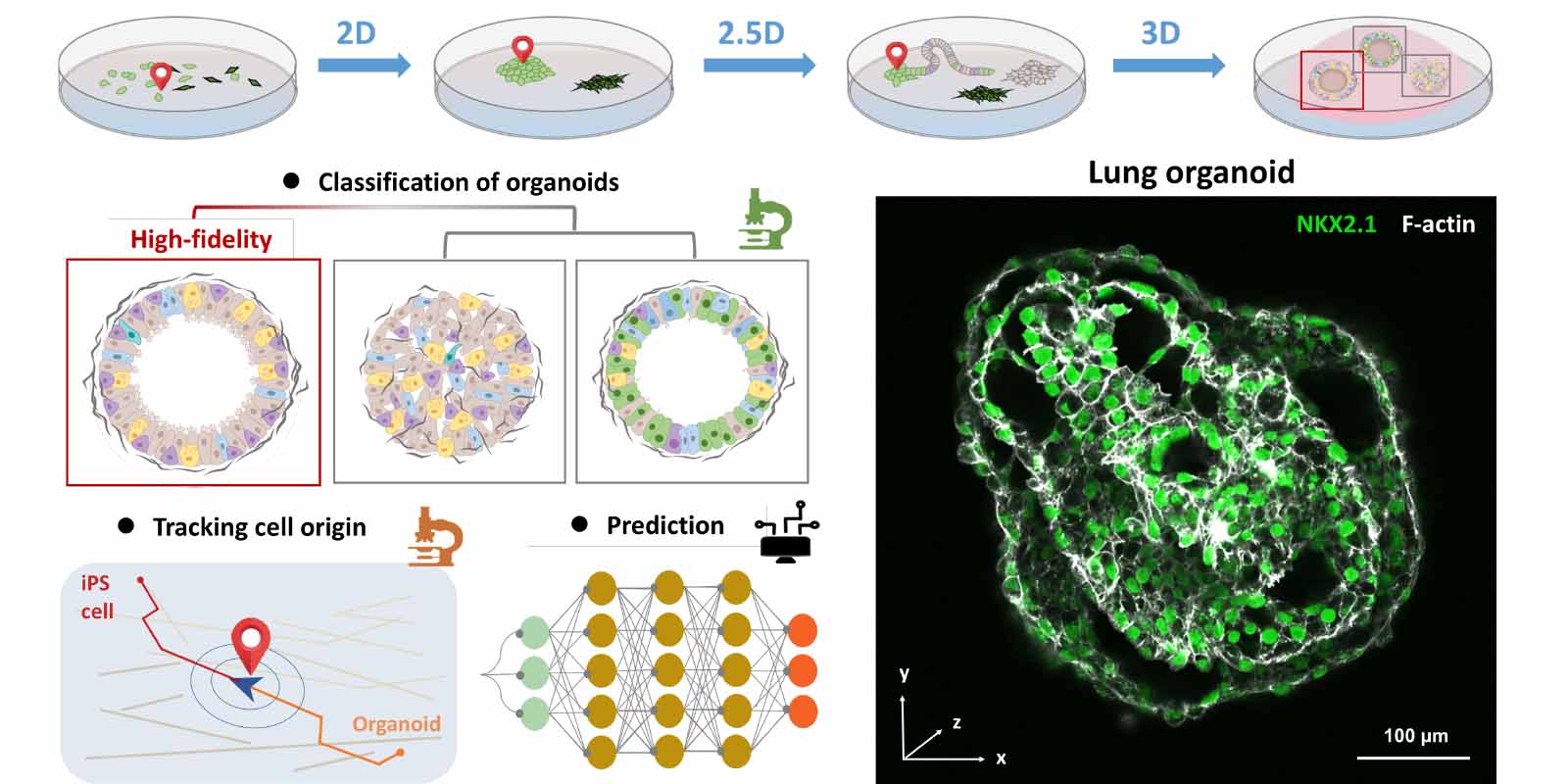AIOrganoid
Artificial Intelligence Assisted-Imaging for Creating High-yield, High-fidelity Human Lung Organoid

Organoids have become a valuable tool in developmental biology, disease modeling, drug screening and personalized medicine. However, their real-life application lacks robustness, hampered by insufficient maturation, uncontrollable cell distribution, low reproducibility and lack of standardization. To address these bottlenecks, the AIOrganoid team will apply cutting-edge imaging techniques and develop novel AI-based solutions to facilitate human lung organoid formation with high yield and fidelity.
The process of organoid formation will be tracked and identified at single-cell resolution using deep learning-based cell detection, tracking and classification. Leveraging our large volume of multi-modal datasets, we will train deep neural networks to predict the fate of individual cells as well as the maturation and function of complex organoids. Such a transformative approach will bridge the gap between cell biology and computational imaging, and advance the application of organoids.
Publications
Other projects

SATOMI
Tackling the segmentation and tracking challenges of growing colonies and microbialdiversity
An artificial intelligence will observe the growth of bacteria: from microscope images of bacterial cultures taken at regular intervals, it will precisely track the development and division of individual cells – even when multiple bacterial species are cultivated together.
SyNaToSe
Leveraging Cross-Domain Synergies for Efficient Machine Learning of Nanoscale Tomogram Segmentation
The aim is to develop an adaptable algorithm that can be used to perform different tasks in data and image analysis without needing to be trained with new, laboriously annotated images for each separate task.
Hyper 3D-AI
Artificial Intelligence for 3D multimodal point cloud classification
The aim is to develop an artificial intelligence that can achieve the fusion of two-dimensional data with three-dimensional information. Based on this, the software would simultaneously be able to recognise image characteristics as well as the spatial relationships between different objects.